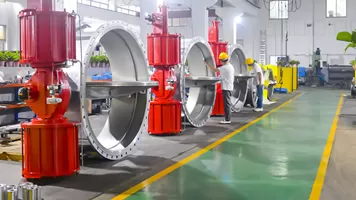In industrial fluid control systems, valves are an indispensable component primarily used to control the flow of fluids. The valve rod, as one of the core parts of the valve, directly affects the stability and reliability of the entire system with its performance and function. This article will detail the design, material selection, manufacturing processes, and common faults and solutions of the valve rod, aiming to provide reference for engineering technicians in the valve industry.
The Role and Design Requirements of the Valve Rod
The valve rod is a crucial part connecting the valve operating mechanism to the opening and closing components, realizing the valve’s opening and closing through its movement. In designing the valve rod, its force and torque under different working conditions must be considered to ensure its strength and stiffness meet operational requirements. Additionally, the design of the valve rod should also take into account wear resistance and corrosion resistance to adapt to various complex working environments.
Material Selection
The performance of a valve rod is significantly influenced by the choice of materials. Common valve rod materials include stainless steel, carbon steel, alloy steel, etc., which have good mechanical properties and corrosion resistance. For instance, under high-temperature and high-pressure conditions, alloy steel valve rods can provide higher strength and heat resistance; in corrosive media, stainless steel valve rods exhibit better corrosion resistance.
Manufacturing Processes
The main manufacturing processes for valve rods include heat treatment, machining, and surface treatment. Heat treatment can improve the hardness and toughness of the valve rod, enhancing its resistance to bending and torsion. Machining is a key step in forming the precise dimensions and shape of the valve rod, requiring high-precision machinery and skilled operation techniques. Surface treatments like chrome plating or anti-corrosion coating can enhance the valve rod’s corrosion and wear resistance, prolonging its service life.
Common Faults and Solutions
Possible faults during the use of valve rods include bending, fracture, and corrosion. These faults might be caused by improper material selection, suboptimal manufacturing processes, or improper operation and maintenance. To prevent these faults, it is necessary to choose materials and structures rationally during the design phase, strictly control the manufacturing processes, and follow operational procedures while using them, conducting regular inspections and maintenance.
As a significant component of the valve, the performance of the valve rod directly affects the control effect and service life of the valve. By optimizing the design, selecting appropriate materials, adopting advanced manufacturing processes, and implementing correct operation and maintenance measures, the performance and reliability of the valve rod can be significantly improved, thereby ensuring the stable operation of the entire fluid control system.
In future developments, with the application of new materials and technologies, the design and manufacturing of valve rods will become more refined and efficient. Meanwhile, intelligent valve systems will also impose higher requirements on the performance of valve rods, such as better durability and stronger adaptability. Therefore, continuous technological innovation and experience accumulation are crucial for the development of the valve industry.

